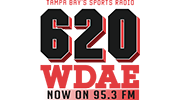Setting Realistic Goals
 Written by Andrew Choe (@choe20)
Written by Andrew Choe (@choe20)
I was sitting outside with a few of my friends who happen to be very knowledgeable and successful working in the stock market. They listened to me vent about the bad streak I was going through betting bases which saw my ROI drop from 78% to 17%. We started talking about the correlation between sports betting and the stock market – comparing yearly return on investments as the main similarity between the two. I then brought up the question, “What yearly return on investment would you be happy with, in order to walk away satisfied every year?”. My friends both answered firmly, “20 percent.” I asked why and both merely said “Look at it this way, I double my investments in five years. Fives years!” In my head I started relating it to sports and thinking to myself how easy 20% was for me to reach and surpass. At that point, all of a sudden everything clicked: What if you set realistic goals on your desired returns at the end of each season using previous data from your handicapping history to figure out an attainable percentage (note: this requires strong record keeping so you understand exactly where your strengths and weaknesses are, not just a 1 year sample size)
For someone like me, I prefer to play across the board in almost every major sport (MLB, NCAAB, NHL, NBA, NFL, and NCAAF). Many good handicappers go through hot streaks, with most of their profit margin occurring early in the season. Inevitably, what everyone will faces at some point is regression. No matter how good of a handicapper you are, with every hot streak is a cold streak waiting right around the corner.
A good strategy is back tracking your record in each and every sport; looking at each season independently to gauge highest and lowest level of returns. Look at it this way, I managed to get close to an 80% ROI in less than 2 months and all of the sudden I hit a few big bumps the past 3 weeks and lost over 60% of my profit returns. Am I ever going to surpass or even come merely close to 80% throughout the rest of the season? I’d say its highly unlikely. If I knew the big regression was right around the corner, would I take the 80% and walk away for the rest of the season? Definitely. One could argue that taking a step back, looking at your past record / yearly profit, and setting a reasonable return throughout the whole year is a sound investment strategy. Next, look at each sport individually and divide them into your annual expectation so that they all comprise your yearly goal, creating higher expectations in your most profitable sports. To make this easier to understand using a round 100% in return on your investment, I’ve shown my bankroll expectation. In order, my most profitable sports are MLB, NCAAB, NHL, NBA, NCAAF, and NFL. Therefore:
MLB: 40% ROI
NCAAB: 25% ROI
NHL: 15% ROI
NBA: 10% ROI
NFL: 5% ROI
NCAAF: 5% ROI
Once you’ve reached your goal stop wagering on the sport completely and be content with the profits. This automatically mandates discipline and keeps you from further exhausting your bankroll or from hitting any sort of regression along the way that can diminish your profits by the end of the season. The real key? Being able to recognize your strength’s and weaknesses without fail.












